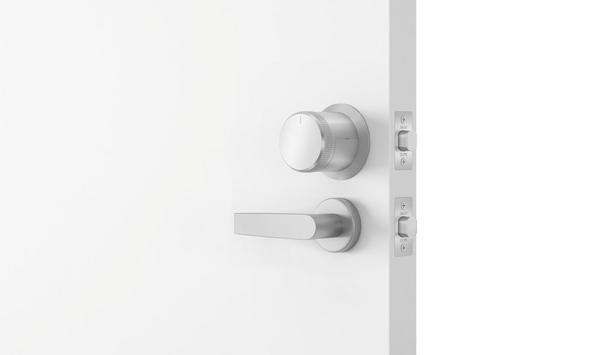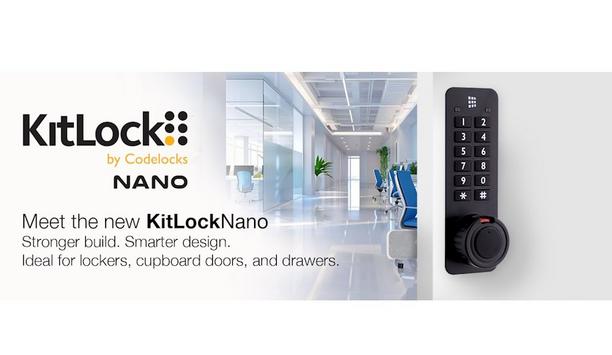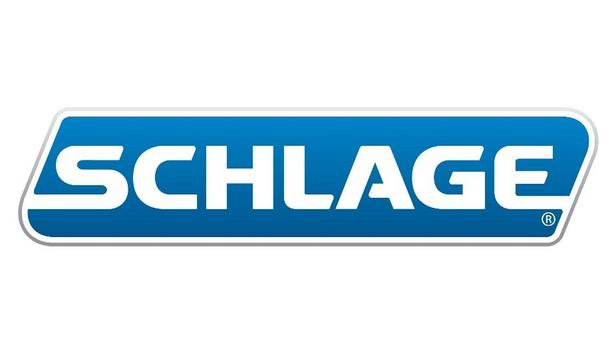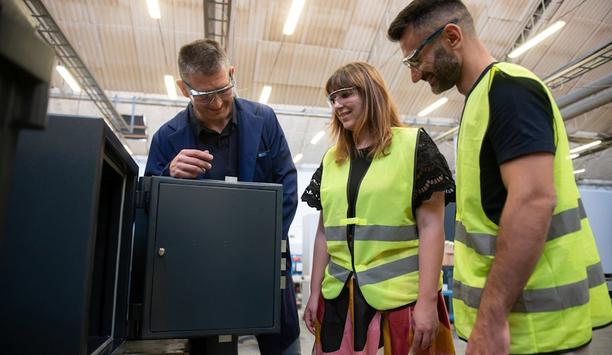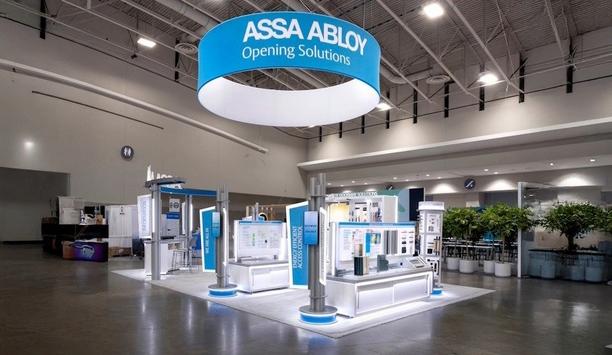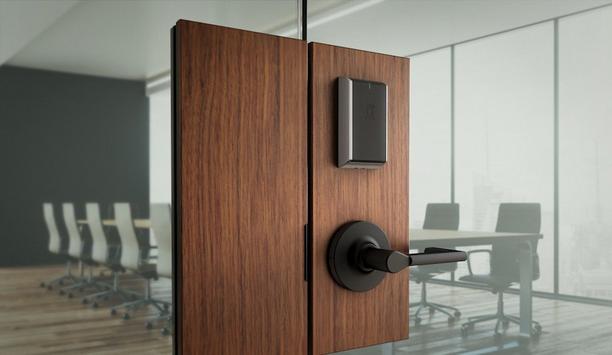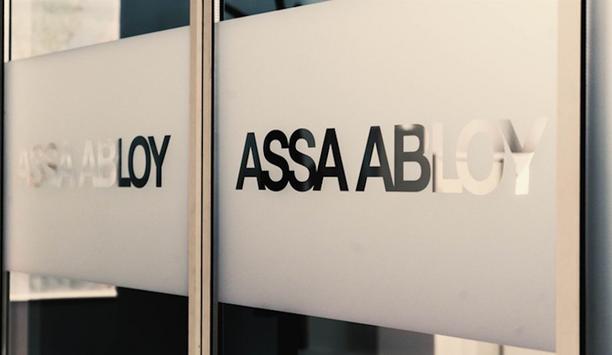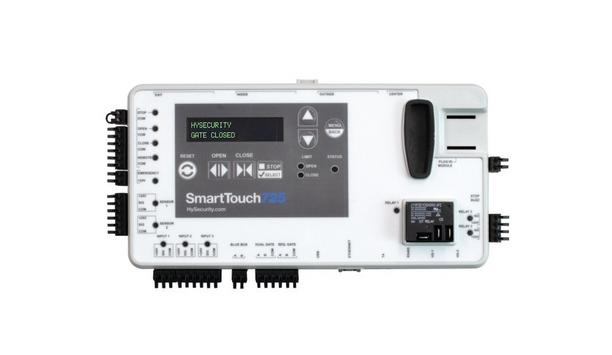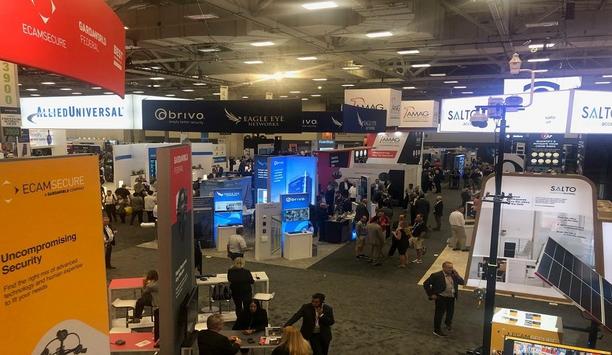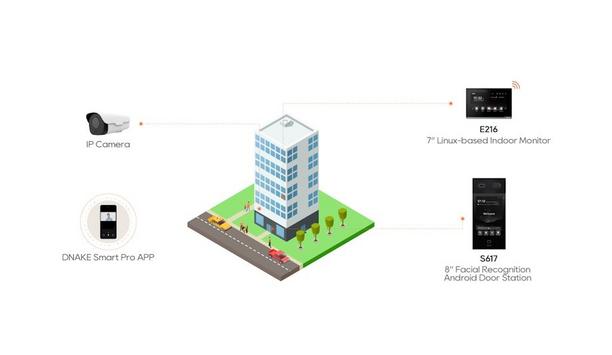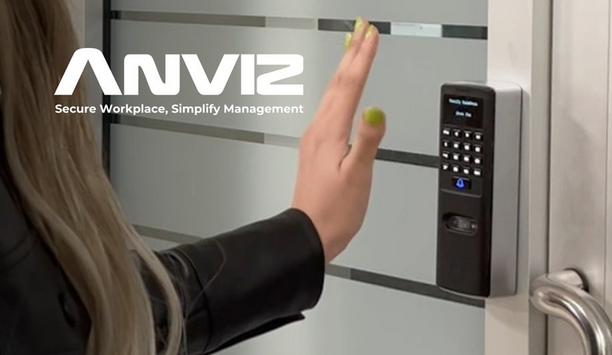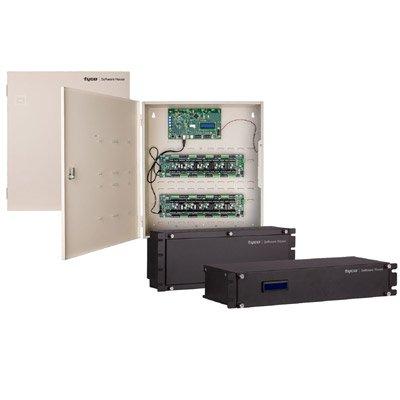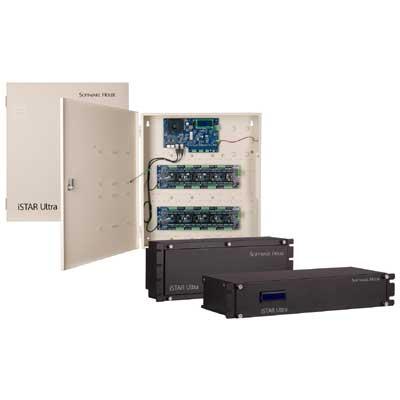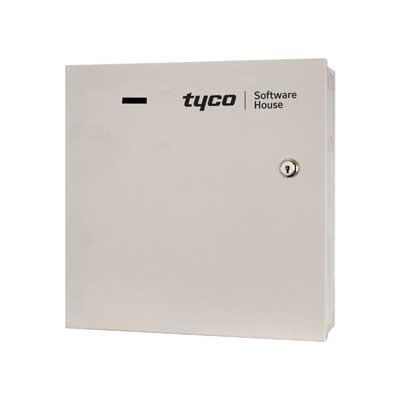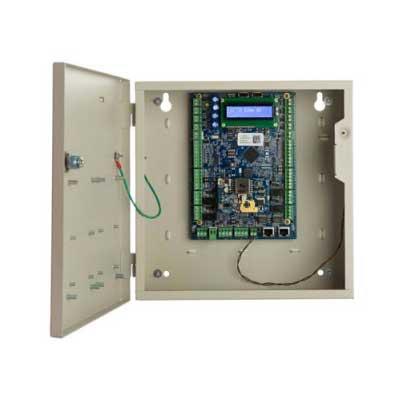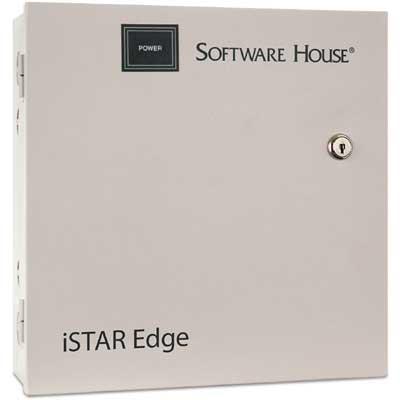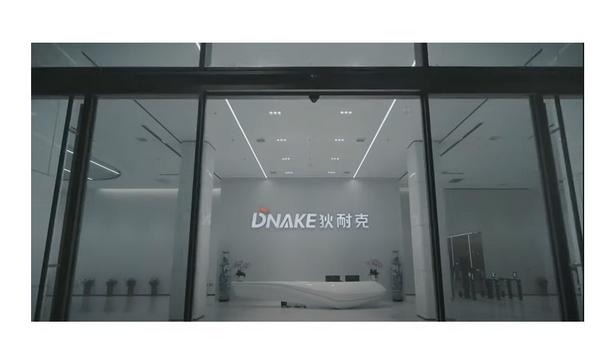Electronic door locks
Salto announces the launch of Salto DLok, the latest residential door smart locking solution. DLok marks a new era in Salto’s smart home innovation. This universal, motorized smart lock connects effortlessly with the Salto Homelok ecosystem to transform the residential access experience for smart homes and apartments, delivering next-level security, convenient keyless access, and automation. The DLok gives residents the power to enjoy a digital, fully automated, and universally compatible...
Salto, a pioneer in smart access technology, proudly celebrates its 25th anniversary in 2025. Marking a quarter century of transformative innovation, Salto continues to lead the industry by redefining how people experience access and secure spaces worldwide. Founded in 2000, Salto began with a bold vision to create universal, wire-free, and networked smart locking systems. From its early days as a small startup in northern Spain, Salto has grown into SALTO WECOSYSTEM – a global force unit...
Codelocks launches its KitLockNano, a redefined compact lock, engineered with a stronger build and smarter design. The upgraded lock delivers improved performance and functionality in the same ultra-small footprint as the original, while including a key override for complete control in any situation. Ideal for lockers, cabinets, and drawers, the KitLockNano addresses the growing demand for modern, reliable access control in environments like workplaces, sports facilities, and hotels. Reenginee...
Schlage, America’s Most Trusted Lock Brand and pioneer in door hardware innovation for over a century, now announced the latest limited release from Pin & Tumbler™ A Studio by Schlage — the Refined Finishes Collection. Designed to elevate everyday spaces with subtle sophistication, the collection introduces three new finishes that embody quiet elegance and refined design. Design innovation “Design innovation is not always about bold statements — it’s al...
Alfred International, a pioneer in smart lock solutions, announced that its ML2 Smart Mortise Locks and DB2S Smart Locks with Zigbee have achieved INTEREL certification, enabling seamless integration with the EOS 2 all-in-one thermostat hub for smart building deployments. This certification positions Alfred as a key partner for property management companies seeking cost-effective, scalable access control solutions across multi-family properties. Alfred's commercial-grade Zigbee smart locks Th...
Gunnebo Safe Storage is reinforcing its position in Europe by combining large-scale manufacturing with advanced locking technology across its full range of safe storage solutions. With specialist sites now operating as a single platform, the company has created one of the most comprehensive secure storage operations on the continent, with recent integrations being central to its success. High-security locking systems The Markersdorf facility in Germany, one of Europe’s key manufacturing...
News
In the eyes of some, locks are simply used for keeping people out, and for keeping the contents of a building, cabinet or locker safe. But as they know at Codelocks, access control is about so much more than that. It’s about managing spaces and giving people convenient access in ways that can transform how a building or space works and feels. That’s one of the reasons they rarely talk about ‘security’, if at all. If they focus on access control as being simply about protection, then they’re likely to see locks and other access control solutions as just a cost – an expense line on a balance sheet. They’d also overlook one of the biggest changes impacting the industry, and the first of several trends shaping access control in 2026: the change from a cost center to a revenue generator. Entrepreneurs and access – from cost to profit center “There’s been an explosion in short-term rental applications over several years, and I mean much more than just BnBs or holiday homes,” said Jo Milne-Rowe, Managing Director at Codelocks UK. “We’re reaching a point where almost anything that has the potential to be shared and rented out is being. Entrepreneurs are seeing new opportunities, and using access control to turn them into profit-generating realities.” Festival lockers are a booming example. They are simple storage units rented to attendees at music festivals and events. People book online, select the rental duration, and receive a time-sensitive access code instantly. The coded locks allow customers to store belongings without keys, while operators remotely manage thousands of lockers, changing codes automatically between rentals without swapping keys and with minimal staff input. New revenue-making products and services This use of locks to create new revenue-making products and services also changes what customers want. It alters their ‘buying equation’. In applications that focus on short-term product rental to drive revenue, customers are seeking locks that help to improve business fundamentals, like utilization and booking rates. Likewise, they’re looking for locks that improve the customer experience and create an attractive, easy-to-use product. As manufacturers and product innovators, this changes what they need to offer customers in 2026 and beyond. The balancing act–new tech and simple solutions There is a lot of hype around AI at the moment. And understandably, so if using ChatGPT or similar. The UK government is looking for the country to become an ‘AI superpower’, while also using the new technology to do things like free up NHS hospital beds. With all this attention on bleeding-edge technology, however, people can be led to think that access control must follow the same path: that because everyone’s talking about tech, it’s what customers will be demanding in 2026. However, despite the attention lavished on breakthroughs like AI, many customers are still looking for simplicity of operation and maintenance in their access control solutions – even the entrepreneurs. Demanding AI in access control solutions “With any new tech, there’s hype and there’s practical application. European customers aren’t demanding AI in their access control solutions right now,” said Steve Newman, Regional Director for Codelocks Europe. “That’s probably for several reasons, not least because simplicity is something they prioritize.” The demand for simplicity is especially strong in the locker market, where most facility and building managers are responsible for looking after thousands of different lockers that require regular maintenance. In large sites such as student accommodation or government offices, small issues quickly add up to be a large drain on resources. “For lockers – which make up the majority of our business – most customers are choosing either mechanical locks or hard-wired solutions because they want to avoid battery maintenance,” said Mark Samuelson, Director for Codelocks Australia. Hard-wired solutions Mechanical lockers are ideal for short-term, multiple occupancy applications requiring simplicity and minimal maintenance to keep costs low. Hard-wired solutions don’t tick all these boxes, though. The cost of installing new wiring can outweigh the cost of avoiding batteries, leaving mechanical locks as the simplest and best choice. Still, with an eye on the future, they don’t think customers will have to make these kind of choices for much longer. Battery harvesting will soon become popular, using the power in people’s mobile phones to temporarily power a cabinet, door or locker lock. Despite all of this, the real winners in 2026 will be those organizations that listen to their customers. Those companies that focus on solving fundamental customer challenges without over-egging the latest trends. Understanding the real customer “Protection concerns have driven people to effectively over-specify the locks they need, which is neither cost-effective nor necessary,” said Matt Welty, Vice President at Codelocks Americas. “For us, this has been an opportunity. We’ve guided many companies toward the right-fit product, rather than the over-the-top product. It’s about understanding the real customer need and meeting it.” Sustainability in the supply chain The urgency around climate targets and sustainability is growing as 2050 net-zero targets and interim milestones, such as 68% emissions cut by 2030, get closer. Customers everywhere are also more focused on the environmental impacts of their purchases, while supply chain scrutiny is increasing. In access control, sustainability is a consideration on two levels. Practically, people are demanding products that last longer. They need products that can be repaired rather than replaced, and they’re looking to minimize waste. On a procedural level, customers need their products to be certified so they can satisfy procurement requirements. Success in 2026 requires addressing both of these customer needs, building genuinely more sustainable products that are supported by the right certifications and accreditations. Almost all Codelocks products are repairable, which massively reduces waste and promotes a more circular economy. In 2025, as part of the sustainability efforts, Codelocks UK achieved ISO 14001 (environmental management) to help the UK customers with their supply chain requirements; 2026 will be the first year they report the emissions too, giving transparency to the customers for their own emissions reporting. Moving forward with awareness What’s become clear from conversations with Codelocks senior pioneers is that listening to customers has never been more important. Access control in 2026 comes down to understanding what customers actually need, versus what the industry thinks they should want. Whether working with entrepreneurs applying rental models to new spaces, helping facilities managers balance innovation with operational simplicity, or providing repairable locks backed by ISO certifications, success lies in responding to real needs with the right solutions.
ASSA ABLOY Opening Solutions will be returning to Greenbuild 2025, the world's largest annual event for green building professionals. This conference and expo is a global platform for sustainable building. Held from November 4–7, 2025, in Los Angeles, it brings together architects, engineers, owners, and sustainability pioneers to explore innovations, educational opportunities, and products that advance the future of green design and construction. Door and access solutions ASSA ABLOY helps its partners build a more resilient future by delivering innovative, sustainable door and access solutions that enhance safety, durability, and energy efficiency across the built environment. By combining global expertise with local insight, ASSA ABLOY empowers its partners to meet evolving challenges — from climate resilience to security demands — while advancing shared sustainability goals. Latest innovations in door security Attendees are invited to visit ASSA ABLOY at Booth 301, where the company will showcase its latest innovations in comprehensive door security and digital access control. The presentation will feature sustainable, industry-leading products and solutions that are transforming facility operations nationwide while reinforcing ASSA ABLOY’s commitment to environmental responsibility. Energy-efficient access control “We are eager to welcome industry professionals to our Greenbuild booth this year,” said Amy Musanti, Director of Sustainable Building Solutions at ASSA ABLOY Opening Solutions. “There will be a variety of opportunities to explore energy-efficient access control and exterior envelope solutions. Attendees will learn about our vast offering of transparency documents and our global commitment to Science Based Targets.” Evaluating the impact of building materials ASSA ABLOY is also exhibiting in the mindful MATERIALS pavilion (booth 851). This area will unveil an industry-wide toolkit designed to provide clarity in evaluating the impact of building materials, enabling stakeholders to make confident, consistent decisions about sustainable products. It aims to shift the industry from fragmented data to collective progress. “Greenbuild 2025 is our moment to bring alignment into action, and thanks to ASSA ABLOY’s support, we’re able to do just that,” said Jen Levisen, Director of Communications, mindful MATERIALS. “With the new toolkit, we’re empowering every stakeholder to evaluate material impacts with clarity, consistency, and confidence, transforming ambition into measurable change, and moving the entire industry from hope to action." Range of door security solutions ASSA ABLOY is committed to continually enhancing its range of door security solutions through ongoing innovation and optimized products. The company has a proven track record of enhancing security, safety, energy efficiency, and convenience, all while ensuring that its products fit seamlessly into the aesthetic design of any space. No other company in the door security solutions industry can match the extensive range and high quality offered by ASSA ABLOY.
Addressing one of the most critical issues affecting society, the education and healthcare communities, parents in Pennsylvania and throughout the United States, and — above all else — students in higher education and K-12, ASSA ABLOY Door Security Solutions Tri-State is hosting an important summit on security and life safety in Philadelphia. The summit will feature experienced experts from major universities, school districts, healthcare, and law enforcement to explore collaborative solutions to enhance the safety of learning environments. Keynote speakers Keynote speakers include Julie Banister, Assistant Vice Chancellor at the University of Pittsburgh, who will address Safety, Security, and the Digital Transformation, and Jin Kim, retired FBI Special Agent and pioneering expert in active threat response and homeland security, who will speak to The Evolving Active Shooter Risk: Maintaining Modern-Day Resiliency. A stacked panel, Beyond the Blueprint: Strategic Collaboration for Safer Learning Environments, will include Joe Delucca, Director of Administrative Services – Luzerne Intermediate Unit; Jim McCormack, Associate Vice President – Fiscal Affairs – Commonwealth University; Ben Gollotti, Founder of LARGO Consulting; Nicole Morson, Principal – Health Sciences – NORR Architects and Derek Ommert, Director of Business Development – ASSA ABLOY. Platform for elevating the conversation “We need to talk about this issue because we gain so much from the insights, experiences, and ideas of others,” Tony Denisco, Principal, ASSA ABLOY Door Security Solutions Tri-State. “This summit has been a platform for elevating the conversation, sharing important information, establishing best practices, and making our places of learning safer for all stakeholders. I am confident this summit will emulate our previous success and empower attendees to advance safety and security in learning environments.” Also onsite, ASSA ABLOY’s latest innovations in safety, security, and sustainability are on display in a 27-foot traveling showroom, where stakeholders can interact with cutting-edge products firsthand. This initiative aligns with ASSA ABLOY’s mission to make the world a safer place through education, innovation, and community partnerships.
ASSA ABLOY Opening Solutions will be returning to GlassBuild America, the largest annual trade show in North America for the glass, window, and door industries. Happening November 4-6 at the Orange County Convention Center in Orlando, Florida, GlassBuild America is where buyers and sellers meet and learn how to solve their most pressing challenges. The action-packed event features networking between exhibitors and attendees, and experiencing new technology and products. ASSA ABLOY Opening Solutions will showcase its latest innovations in comprehensive door security and digital access control at booth #15007, which is conveniently located near the front entrances. Innovation in the glass industry “The show provides an excellent opportunity to showcase the creativity and innovation happening in the glass industry,” stated Tyler Baker, Director of Business Development for Glass and Aluminum at ASSA ABLOY Opening Solutions Americas. “It’s always exciting to engage with designers and partners who share our passion for blending aesthetics, performance, and security in modern architectural solutions.” Range of door security solutions ASSA ABLOY continuously expands its range of door security solutions and innovates to improve security, safety, energy efficiency, and convenience. The company focuses on creating designs that integrate aesthetically pleasing elements into the spaces they enhance. The solution lineup at GlassBuild 2025 includes: Rockwood PDU8000 Panic Device The device’s engraved push area and boundary grooves make exit doors stand out in a crowd. Now ANSI/BHMA A156.44, Grade 1 certified, this durable product offers keyed and non-keyed functions, new bent end return and two-piece configuration options, and a selection of finishes, providing a customizable design. Available to pair with manual or electric strikes, this line provides beauty, security, and peace of mind. Bruken DL-GS3550 Digital Glass Door Lock Provide keyless access control to your all-glass interior openings with the Bruken DL-GS3550 Digital Lock from ASSA ABLOY Glass Solutions. This field-reversible device is ideal for retrofit applications and features three modes of access, including fingerprint identification, numeric passcode, and smart card. This multi-user lock requires no glass fabrication for easy installation and is compatible with single or pairs of glass doors that are 3/8" - 1/2" thick. Control iD iDFace Max With its modern design and elegant finish, iDFace Max is the ideal device for monitoring and controlling venue access through facial identification technology. Its advanced algorithm and high-quality cameras allow the identification of up to 100,000 faces (1:N) with face liveness detection and identification of users with and without a mask. iDFace Max has an integrated SIP intercom with TCP/IP, USB, and PoE connectivity. The device also features a large 7-inch LCD touchscreen display, allowing for easy and intuitive navigation to configure access rules and view reports. ASSA ABLOY ACCENTRA nexTouch Cylindrical Lockset Combines a sleek, modern design with advanced access control technology, delivering a stylish yet secure solution for a wide range of facilities. With a heavy-duty construction and ANSI/BHMA Grade 1 certification, nexTouch ensures durable and dependable performance. This standalone electronic lock features modular technology, allowing seamless upgrades to Data-on-Card functionality. Available with either a capacitive touchscreen or pushbutton keypad, nexTouch® provides an ADA-compliant, user-friendly system engineered to safeguard your facility and personnel. Rockwood OptiCoat Finishes Offering realistic wood and marble patterns for door hardware of all kinds, OptiCoat is ideal for elevating projects where every detail matters, including upscale hotels, offices, and multi-family spaces. With 13 readily available finish options, plus custom capabilities, matching opening hardware to the overall style of your facility has never been easier. Centrios Centrios allows small businesses to manage access to their business by connecting their Centrios locks and smart readers with a simple-to-use mobile app. With Centrios, it’s simple to unlock doors with a touch of a phone, manage access for all employees and visitors in one place, and view audit and event reports. ASSA ABLOY is committed to expanding its solution lineup, along with adding top-of-the-line products to its quick shipping programs. ASSA ABLOY experts are here to listen and ensure that they are meeting the industry's needs. Please stop by the booth to meet with experts from ASSA ABLOY Glass Solutions and Rockwood.
ASSA ABLOY has acquired Metal Products Inc. (“MPI”), a US manufacturer of custom-made hollow metal doors and frames. "I am very pleased to welcome MPI to ASSA ABLOY. This acquisition delivers on our strategy to strengthen our position in mature markets through adding complementary products and solutions to our core business," says Nico Delvaux, President and CEO of ASSA ABLOY. MPI's strong reputation "MPI has built a strong reputation in our industry for trusted, consistent delivery and exceptional customer focus," says Lucas Boselli, Executive Vice President of ASSA ABLOY and Head of the Americas Division. He adds, "Their best-in-class lead times for custom metal doors and frames, combined with their strategic footprint in the US, make them a valuable addition to our division. This acquisition enhances our product offering and strengthens our ability to serve customers with speed, reliability, and regional expertise." MPI's main office and factory MPI was founded in 1980 and has some 170 employees. The main office and factory are located in Corbin, Kentucky, USA. Sales for 2024 amounted to about MUSD 22 (approx. MSEK 230) with a good EBIT margin. The acquisition will be accretive to EPS from the start.
Nice, a pioneer in home and building management solutions, has launched the SwingSmart™ 535 and SlideSmart™ 535 – next-generation commercial gate operators built for pros who demand performance, reliability, and smarter control. Designed with advanced brushless DC motor technology and next-gen control intelligence, the new 535 Series delivers smooth, quiet, and efficient operation even in demanding environments – from gated communities and estates to commercial sites and storage facilities. Smart DC platform “Our partners and installers deserve technology that’s as intuitive as it is powerful,” said John Allen, Director of Product Management at Nice North America. “With the 535 Series, we took everything the industry loved about our proven Smart DC platform and re-engineered it with more intelligence, connectivity, and efficiency than ever before. These operators redefine what professionals can expect in performance, reliability, and simplicity.” SmartTouch™ 725 Controller and SmartBLDC Power Module At the heart of both operators is a field-proven SmartTouch™ 725 Controller and SmartBLDC Power Module, technologies first proven in the HySecurity SlideDriver® II. Together they deliver precise torque control, ultra-smooth starts and stops, plus exceptional power efficiency and advanced management. Each unit features a 24-volt brushless DC motor with direct-drive operation, eliminating belts and pulleys for quieter performance and virtually maintenance-free reliability. An integrated battery-backup system provides up to 100 gate cycles during power loss, while an onboard 200-watt MPPT charger maximizes efficiency for solar installations even in low-light conditions. Intuitive two-line OLED display The 535 Series introduces Bluetooth Low Energy (BLE) wireless connectivity and integrates seamlessly with the HySecurity Installer App, allowing technicians to configure more than 70 settings, perform diagnostics, and save system profiles directly from their smartphone for climate-controlled vehicles. The intuitive two-line OLED display, integrated seven-day timer, and toolless wire terminals streamline setup, while BlueBus® accessory integration and a MegaCode® receiver simplify pairing with Linear® remotes and HomeLink® in-vehicle transmitters. The system automatically detects connected sensors and supports both pulsed and 10 k resistive monitoring methods for greater installation flexibility. Nice’s patented Taper Clamp technology For advanced maintenance and support, every operator includes automatic debug logging and a virtually unlimited event history, storing time-stamped data for quick diagnostics. USB and Ethernet ports enable firmware updates and file transfers, while built-in HyNet™ technology offers secure remote monitoring, proactive maintenance alerts, and reduced service-call costs. The SwingSmart 535 is ideal for gated neighborhoods, ranches, and estate properties, while the SlideSmart 535 is designed for commercial environments such as utilities, small businesses, and storage facilities. Both share a sleek, unified design with tight-fitting, rodent-resistant covers and weather-ready enclosures. The SwingSmart model adds Nice’s patented Taper Clamp technology, an adjustable clutch that lets installers fine-tune performance for high-wind applications or enhanced safety during vehicle impact. Additional innovations include contactless solid-state limits, adaptive Intelligent Entrapment Sensing (IES) that automatically adjust for changing conditions, and a cast-steel arm assembly engineered for long life and operator safety. HySecurity’s control architecture For the first time, Nice has merged the strength of HySecurity’s control architecture with the wireless innovation of Linear’s MegaCode accessories and the intelligent simplicity of Nice BlueBus connectivity. This convergence creates a cohesive platform that streamlines training, simplifies service, and enhances interoperability across the company’s perimeter-access portfolio. Durability of HySecurity “The 535 Series represents a major milestone in our unified technology strategy,” said Jeff Shaw, Chief Product Officer at Nice North America. “It embodies our focus on reliability, integration, and user-centric design. By combining the proven durability of HySecurity with the smart simplicity of Nice, we’re empowering installers and customers with an intelligent, future-ready gate operator that just works.” The Swing Smart 535 and SlideSmart 535 are available now through authorized Nice distribution partners.


Expert commentary
A key characteristic of many successful companies is that good ideas come from everyone, not just specific departments or job titles. What one person sees as obvious may be questioned by someone else who is less familiar with the product or process. This simple interaction can spark a whole new, faster, and better approach. While valuing tradition is important, if someone uses the phrase “that’s how we’ve always done it,” it’s essential to analyze the process to ensure it remains optimal. Business conditions change rapidly, and what was considered a perfect process last week may need adjustments this week. Comprehensive approach to innovation This comprehensive approach to innovation fosters continuous improvement across all aspects of the organization Innovation should permeate every level of an organization, from product development and customer experience to sustainability practices and employee training. This comprehensive approach to innovation fosters continuous improvement across all aspects of the organization, allowing companies to stay agile, competitive, and in tune with their customers' constantly evolving needs. Addressing real-world challenges At the heart of pervasive innovation in the security industry lies the development of smart products and solutions that address real-world challenges. This approach integrates advanced technologies to enhance security while improving user experience. For instance, the integration of mobile credentials, biometrics, real-time wireless locks, intelligent keys, and cloud-connected access control systems exemplifies how technology can streamline operations and provide users with seamless and secure access. Offering user-friendly solutions These advancements reflect a deep understanding of user needs and preferences, offering solutions that are not only secure but also convenient and user-friendly. A notable example is UniKey's Kēvo, the first Bluetooth-enabled touch-to-open smart lock, introduced in 2013. Developed in partnership with Kwikset, this innovative product allowed users to unlock doors simply by tapping the lock with a compatible smartphone. By continuously innovating across various aspects of security products and solutions, companies can ensure that their offerings remain relevant and effective in addressing the evolving challenges of the security landscape. Design-driven features Products designed for quick and straightforward installation reduce labor costs and minimize downtime Innovation extends beyond technology to encompass design-driven features that prioritize user convenience and satisfaction. For instance, ease of installation is a critical factor in the adoption of new door hardware. Products designed for quick and straightforward installation reduce labor costs and minimize downtime, making them more attractive to both installers and end users. For electronic locks, long-lasting battery performance is essential for minimizing maintenance and ensuring reliability. Products with extended battery life reduce the frequency of replacements and enhance user confidence. Incorporating antimicrobial finishes into door hardware addresses growing concerns about hygiene and cleanliness. Taking hygiene a step further, touchless technology in door hardware minimizes physical contact, reducing the potential for cross-contamination and enhancing user convenience. Sustainability initiatives Sustainability initiatives in door hardware have evolved from niche considerations to central pillars of modern product development, not least of which is the growing consumer demand for sustainable products, which is influencing purchasing decisions. According to a Nielsen report, 66% of global consumers are willing to spend more on a product if it comes from a sustainable brand, leading many companies to prioritize the use of recycled and recyclable materials in their products. Beyond material selection, manufacturers are also refining their production processes to minimize environmental impact. Finishing processes are evolving to use non-toxic and low-impact finishing methods, such as powder coating and physical vapor deposition. Energy-efficient door hardware Energy-efficient door hardware plays a significant role in the overall energy conservation of buildings Energy-efficient door hardware plays a significant role in the overall energy conservation of buildings. Properly designed door hardware can help maintain a building’s thermal envelope, reducing heating and cooling demands. For instance, the HID® Signo™ access control reader includes improved power supply technology and energy-saving features that ensure reduced energy consumption when the reader is in a resting state. Environmental Product Declarations To further demonstrate their commitment to sustainability, many manufacturers seek certifications validating their environmental efforts. Environmental Product Declarations (EPD) and Leadership in Energy and Environmental Design (LEED) certifications have become key indicators of a product’s environmental performance. An EPD provides detailed information about the environmental impact of a product throughout its lifecycle, aiding in the transparency that architects and builders require to make informed choices. Similarly, LEED certification emphasises energy savings and broad environmental priorities, including water efficiency, CO₂ emissions reduction, and improved indoor environmental quality. Customer service and training Innovation is also making great strides in the behind-the-scenes efforts of customer service and training. Predictive maintenance technologies are revolutionising how companies manage product performance and customer support. By utilizing data analytics and IoT technologies, companies can offer maintenance alerts, remote diagnostics, and connected support services that anticipate issues and failures before they occur. This shift from reactive to predictive maintenance minimizes service disruptions and enhances customer trust by ensuring products operate at optimal levels. Digital training initiatives Digital training initiatives equip employees and customers with the skills needed to utilize new technologies In parallel, digital training initiatives equip employees and customers with the skills needed to utilize new technologies in a cost-effective and accessible manner. Digital installer certification programs, learning portals, and customer enablement initiatives are all part of a comprehensive strategy to equip stakeholders with the knowledge and skills they need to succeed. By investing in comprehensive training programs, companies foster a culture of adaptability and competence, ensuring that customers can fully leverage technological advancements. This approach not only enhances operational efficiency but also strengthens customer relationships by empowering them with the knowledge to make informed decisions. Incremental improvements While groundbreaking innovations often capture headlines, it’s the steady, incremental improvements that consistently deliver real-world value. Companies can achieve sustained growth and success by focusing on continuous innovation across all facets of the organization. This quiet progress, though less visible, is often more impactful as it builds a solid foundation for long-term achievement. In a world where change is the only constant, fostering a culture of pervasive innovation is the key to sustained relevance and growth.
Digital access control has well-known benefits over traditional security, of course, but also costs attached to each stage of its lifetime. However, these costs are not fixed. Many factors – including building size, shape, type, location, national regulations and more – impact affordability and efficiency calculations. Crucially, the type of access solution a business selects – wired or wireless – impacts total operating costs, including during installation, running, and any potential expansion or reconfiguration stages. Wireless installation Wiring premises can be expensive. So, the potential cost savings from choosing wireless digital access begin at the very start. Installation stage is the largest contributor to potential cost savings when businesses go wireless. In calculations for one report, access experts at ASSA ABLOY examined projected costs for a fictional 100-door installation. Labor savings for those who chose wireless over wired locks were 82.5%. Why? Firstly, because wireless installation is much faster. It is also less intrusive. Most wireless locking devices require little or no drilling of the door, whereas wired security needs cabling through and partly around a door – which means not just door damage, but the contracting of specialist electrical installers who may require multiple site visits. These costs add up. Digital access technology Torus aims for the highest level of LEED certification for all its new properties In Poland, for example, developer Torus aims for the highest level of LEED certification for all their new properties around Gdansk. Where possible, they choose products with Environmental Product Declarations (EPDs) and Green Circle documentation, favoring access solutions which reduce their carbon footprint. Wireless digital access technology is a natural choice. “The lack of wiring significantly reduces materials use, reduces costs, and ensures quick installation,” confirms Torus’ Roman Sokolowski. There’s no cabling, which cuts power consumption. There’s less damage to the building fabric and fitters make fewer journeys to and from the site. Adaptable locking solution By choosing a wireless solution, organizations also upgrade building security with little disruption. A wireless system makes it easier to improve security at an existing building via a retrofit process which does not inconvenience staff or disturb work routines. This was one goal at Plexal, a £15 million flexible work environment for London enterprise and academia. Plexal chose battery-powered wireless locks integrated with DoorFlow, NetNodes’ online platform for managing and auditing building access. “Plexal required an adaptable locking solution for a range of different doors and, with no wiring required, it was quick and easy to install ASSA ABLOY Aperio® devices with minimal disruption,” confirms Stewart Johnson, Director at NetNodes. Cost savings with improved energy efficiency Choosing wireless over wired locking can play a vital role in reducing ongoing energy use Choosing wireless over wired locking can play an important role in reducing ongoing energy use – and, therefore, expenditure. Wholesale electricity prices in Europe are approximately double what they were in 2019, according to the IEA’s “Electricity 2024” report. For a variable cost such as energy, where businesses have little control over unit prices, it is critical to control usage, especially if high and/or changeable energy prices become what analysts at ING called “the new normal for business”. Thus, the fact that battery-powered locks consume much less energy than traditional wired solutions is increasingly relevant and important. Additional savings on energy costs Traditional wired door access devices often work via magnets connected permanently to mains electricity. These doors draw power around the clock to remain locked. Wireless locks work differently. They only “wake up” when presented with a credential, to make the access decision. This translates to an additional saving on energy costs during operation: more than 70%, or thousands of euros over a typical access system’s lifetime. Wireless digital access Wireless locks only need a change of their standard battery, which may be rechargeable Related energy and materials costs during in-use stage are also lower. Wireless locks only need a change of their standard battery – which may be rechargeable – typically once every two years. No specialist maintenance is required, saving on specialists and their travel to and from the site(s). By choosing wireless digital access, businesses help protect themselves against these ongoing costs, notably energy price increases and volatility. Cost-efficient flexible working, for staff and facilities managers Perhaps harder to quantify, but equally easy to imagine, the financial benefits of choosing a wireless digital solution are felt in the increased convenience and efficiency of daily operations. In the co-working sector, for example, flexible access to offices is a priority. As “fixed” office space rented by corporations continues to fall, co-working spaces are expected to keep growing, with one estimate suggesting almost 18% CAGR to 2030. To stand out from the competition, the founders of ULab in Alicante sought the latest innovations in access and design to create their 21st-century business center. Part of the suite of digital access solutions from ASSA ABLOY, a SMARTair® system gave ULab real-time access management via battery-powered locks and Openowä, the Mobile Key solution for SMARTair, without any need to wire doors and other openings. SMARTair TS1000 Web interface With SMARTair and Openow, workspace residents can carry virtual keys on their smartphone With SMARTair and Openow, workspace residents can carry virtual keys on their smartphone; ULab’s security team update their rights over the air. An office manager can perform any operation remotely from the SMARTair TS1000 Web interface. In case of an emergency, they could lock-down the site or open doors remotely, for example. It’s convenient, efficient and boosts ULab’s security, benefiting users and managers. And because of SMARTair’s flexibility, they can comfortably welcome many more than their usual 100 daily users. “In addition to regular daily traffic, weekly traffic can almost multiply by 10 if an event is held,” says Enrique Burgos Pérez, Director at ULab. “We needed an access control system as flexible and convenient as SMARTair.” ASSA ABLOY benchmarking report Choosing wireless locks also adds flexibility – and can reduce costs – when an organization reconfigures or expands their commercial space. High-quality wireless devices like SMARTair can typically be reinstalled at another opening without impacting reliability. They move to wherever is convenient. If a business is rethinking workspace to encourage flexible or hybrid work patterns, for example, cost efficiencies could be significant. Typical savings on office relocation or expansion are estimated at around 30% with wireless over wired locking, according to the same ASSA ABLOY benchmarking report. Cost efficiency and more control with ASSA ABLOY digital access To refit and improve their student accommodation, managers at the University of St Andrews sought energy- and cost-efficient access control. They chose Aperio, another innovative digital access solution from ASSA ABLOY. Approximately 1,600 doors so far are equipped with battery-powered Aperio escutcheons – without cabling. Aperio devices integrate fully with both the university’s existing central security system and their student ID card. University security managers continue to enjoy the efficiency benefits of monitoring and controlling access from a single point and in real-time, including for doors across multiple buildings. Aperio, another innovative digital access solution from ASSA ABLOY. Benefits of cost-efficiency In comparison to a wired solution, Aperio offers significant cost-efficiency benefits. Devices are wireless, so can be installed with little energy use and no need for wiring to the mains. They consume near-zero energy when idle and run on standard batteries, consuming little power during operation. Through the entire product life-cycle, Aperio combines reliability with cost effectiveness. “Aperio gives us central management and control,” says Pauline Brown, Associate Chief Information Officer at the University of St Andrews, “and contributes to our award-winning track record in energy efficiency.”
Amidst the challenges of a prevailing economic downturn, the retail sector finds itself grappling with an unparalleled rise in incidents of shoplifting, theft, and burglaries. The disconcerting scenes witnessed on London’s Oxford Street in August 2023, where crowds gathered, looting as many stores as possible, sent shockwaves across the nation’s retailers. This alarming surge in retail crime has put retailers on high alert, as they contend with a rising tide of security concerns. Shoplifting concerns Recent data from the Union of Shop Distributive and Allied Workers (USDAW), has raised alarming concerns: shoplifting rates have surged by an unprecedented 24%. In the first half of 2023 alone, there were approximately 8 million reported shoplifting incidents. With the ongoing burden of the cost of living crisis and the approaching festive season, it is expected that these figures will keep surging. Implementing robust security measures Theft and prevention strategies cost retailers approximately £2 billion in 2021/2022 While more help from the Government to support retail workers and the businesses shoplifters target is certainly needed, the implementation of robust security measures will significantly contribute to deterring these crimes from occurring in the first place. British retailers spend millions on tools to deter and catch shoplifters inside stores, from CCTV and security guards to electronic tagging and alarms. The Grocer reported that theft and prevention strategies cost retailers approximately £2 billion in 2021/2022. Despite these initial costs, other threats are at play beyond the shop floor. Break-ins by criminal gangs For many large town center stores and supermarkets, and units in retail parks, the rear doors and delivery areas are commonly targeted by criminal gangs. It’s not uncommon for thefts to occur from pallets or cages that have been unloaded from lorries and sit waiting to be moved into the building. After-hours break-ins are a risk for all store owners too, particularly over the festive season when a lot of high-value stock has been delivered to shops and supermarkets. Addressing anti-social behaviour The additional fencing was deemed an essential measure to safeguard the community Anti-social behavior also poses a challenge for retailers. In 2022, an Aldi based in Derby invested in security fencing to protect staff and deter loitering groups. The additional fencing was deemed an essential measure to safeguard the community, as dangerous items were frequently found outside the store, including weapons and hypodermic needles. So how do physical security solutions such as fencing and gates help better protect retail establishments such as supermarkets and edge-of-town retail park shops? Fencing and gates: a critical component of retail security 1. Risk assessment and target hardening A thorough risk assessment will identify potential weak spots that require protection. ‘Target hardening’ involves implementing physical security measures that become more robust as they approach the target. This helps deter intruders while ensuring ease of access for customers and staff. 2. Effective perimeter security Opt for difficult-to-climb security fencing that provides a robust obstacle against thieves, vandals, and intruders Selecting fencing solutions according to the potential threats, site characteristics, and topography is crucial. It is important to specify fencing that strikes a balance and maintains a welcoming appearance while safeguarding external areas of the store or warehouse from potential harm and unauthorized access. Solid fencing which provides concealment can help to conceal expensive goods and remove them as a target for opportunistic theft. Opt for difficult-to-climb security fencing that provides a robust obstacle against thieves, vandals, and intruders. I recommend selecting a sufficiently tall and robust fence such as an acoustic barrier. Its noise-reducing properties are often beneficial for these types of sites too. 3. Controlling vehicular speeds and access To enhance security, consider controlling vehicular speeds and access. One effective approach is the installation of bollards at the ends of traditional high streets. This practice is already commonplace as a means of safeguarding against hostile vehicle attacks, but it can also play a pivotal role in preventing quick getaways of vehicles involved in potential heists. Additionally, employing road blockers and sliding gates at the rear entrances of delivery areas would serve to fortify security further. These measures can help in delaying vehicles, allowing for necessary checks to be conducted. 4. Balancing security with aesthetics The presence of high-security fencing can also make a site more of a target for vandals and burglars Another challenge is avoiding creating an imposing presence, especially important for areas situated near residential communities. The presence of high-security fencing can also make a site more of a target for vandals and burglars. To minimize this risk consider specifying timber fencing and traffic barriers to secure car parks, providing both security and a welcoming atmosphere for shoppers. Taking an integrated approach Combine secure perimeter fencing with effective lighting in places with shaded areas and at doors, gates, and shop windows, alongside Perimeter Intrusion Detection Systems (PIDS), and strategically placed CCTV. These measures will hinder unauthorized entry and escape, increasing the likelihood of detection and apprehension. Prioritising employee wellbeing Installing robust security fencing, complemented by CCTV, good lighting, and guarding, creates a safe environment Installing robust security fencing, complemented by CCTV, good lighting, and guarding, creates a safe environment for employees. This not only safeguards their well-being but also provides peace of mind that they are protected effectively in the case of a burglary or crime. When selecting security products for retail sites, it is advisable to opt for items that have undergone rigorous testing and carry relevant certifications for their security level. Each component should meet industry-specific standards for its intended purpose and originate from manufacturers accredited under ISO 9001:2015. This ensures a high standard of quality and reliability in safeguarding the premises. High-quality security fencing As the cost-of-living crisis continues, crime rates increase, and the festive season approaches, the time to act and implement on-site security is now. By investing in comprehensive security measures, retailers can protect their assets, employees, and customers, ensuring a safer and more secure shopping environment for all. High-quality security fencing is also a sound investment, that requires little or no maintenance once installed. The best fencing solutions are extremely weather-resistant, and won’t suffer from rust or corrosion. With all sectors preparing to ride the rapids of recession in the coming year, improving on-site security while selecting cost-effective measures, is one surefire way to protect your people, your property, and your profits from harm.
Security beat
Companies at GSX 2023 emphasized new ways that technologies such as artificial intelligence (AI) and the cloud can address long-standing issues in the security market. Among the exhibitors at the event in Dallas were companies seeking creative ways to apply technology, lower costs, and make the world a safer place. Reflecting on the exhibition, here are some additional takeaways. Expanding AI at the edge i-PRO is a company reflecting the continued expansion of edge AI capability in the security market. Today, more than half of the company’s lineup supports AI at the edge so the customer has a wide choice of form factors when seeking to leverage the feature set. AI processing relay, extended warranty i-PRO is increasing their warranty period from 5 to 7 years, which could be a lifetime warranty in some cases I-PRO also has an “AI processing relay” device that accepts non-AI video streams and applies edge analytics. AI has progressed from a high-end technology to a feature available in a variety of cameras at different price points. i-PRO is also increasing its warranty period from 5 to 7 years, which could be a lifetime warranty in some cases depending on a customer’s refresh schedule and lifecycle management. Active Guard, MonitorCast The company’s video management system (Video Insight) is continuing to build new features including “Active Guard,” an integrated metadata sorter. Their access control platform, MonitorCast, is a Mercury-based solution that is tightly integrated with Video Insight. Their embedded recorders now have PoE built in. “We can move at a faster pace to fill out our product line since leaving Panasonic,” says Adam Lowenstein, Director of Product Management. “We can focus our business on adapting to the market.” Emphasis on retail and other verticals Shoplifting is a timely issue, and retail is a vertical market that got a lot of attention at GSX 2023. “We see a lot of retailers who are primarily interested in protecting employee safety, but also assets,” says Brandon Davito, Verkada’s SVP of Product and Operations. “Shrinkage is a CEO-level priority.” “Retailers are getting more engaged with security posture, instead of letting perpetrators walk,” Davito adds. Intrusion detection Verkada has an intrusion product that will notify a central station if there is an alarm On the alarm side, Verkada has an intrusion product that will notify a central station if there is an alarm, and operators can review videos to confirm the alarm. Other capabilities seeking to discourage trespassers include sirens, strobes, and “talkdown” capabilities. International expansion Verkada continues to expand internationally with 16 offices in all, including Sydney, Tokyo, and London. The core value proposition is to enable customers to manage their onsite infrastructure more simply, including new elements such as PTZ cameras, intercoms, and visitor management. Verkada emphasizes ease of use, including a mobile application to allow access to be managed across the user base. Forging partnerships “We are committed to the channel and industry, and we continue to build relationships and expand our reach,” says Davito. Among the industry relationships is a new partnership with Convergint, which was hinted at during the show and announced later the same day. They are also expanding their partnerships with Schlage, Allegion, and ASSA ABLOY. Working with other verticals They offer new features for K -12 schools, and a new alarm platform is easier to deploy and manage Verkada has also found success across multiple other verticals, notably healthcare, where they integrate with an electronic medical records system. They offer new features for K-12 schools, and a new alarm platform is easier to deploy and manage. They are integrating wireless locks to secure interior doors in schools, looking to secure the perimeter, and installing guest management systems. Transitioning the Mid-Market to the Cloud Salient is squarely focused on the “mid-market,” a large swath of systems somewhere between small businesses and enterprise-level systems. Pure cloud systems are not as attractive to this market, which has a built-out infrastructure of on-premise systems. Adding a camera to an existing system is easier and less expensive than tying it to the cloud. Benefits of cloud It’s a market that may not be ready for pure cloud, but there are benefits to be realized from adding a cloud element to existing systems. “We are continuing to augment our premise-based solutions with added cloud capabilities and flexibility,” says Sanjay Challa, Salient’s Chief Product Officer. The feedback Salient hears from their customers is “I want to own my data.” The hybrid cloud approach offers the right mix of control, flexibility, and unit economics. Cloud add-on capabilities We want to provide the flexibility for customers to go full-cloud as it becomes more economically attractive" Cloud add-on capabilities include bringing more intelligence about system operation to the user via the cloud. Over time, Salient expects to sell more cloud-centric offerings based on feedback from integrators and customers. “We want to provide the flexibility for customers to go full-cloud as it becomes more economically attractive over time,” says Challa. Vaidio AI technology Salient seeks to be a transition pioneer to help customers realize the path to the cloud. Their approach is “crawl, walk, run,” and helping customers make the transition at each stage. Salient has added AI to its product offering, incorporating Vaidio AI technology from IronYun into a powerful suite and broad array of on-premise analytics, which are gaining traction. The seamless approach makes it easy for customers to embrace AI analytics, although Salient remains broadly committed to open systems. Addressing ‘Soft’ Features for Integrators AMAG is in the process of enhancing its product line with the next generation of access control panels. However, “product” is just part of the new developments at AMAG. In addition to “hard” features (such as products), the company is looking to improve its “soft” features, too; that is, how they work with the integrator channel. Integrator channel Rebuilding a process to make your organization more efficient, is relatively easy; it just takes a lot of persistence" “We have the depth of our legacy customer base we can learn from, we just need to close the feedback loop quicker,” says Kyle Gordon, AMAG’s Executive Vice President of Global Sales, Marketing, and commercial Excellence, who acknowledges the value of reinstating face-to-face meetings after COVID. “We are laser-focused on nurturing our integrator channel,” he says. “Developing new features takes time, but rebuilding a process to make your organization more efficient, that’s relatively easy; it just takes a lot of persistence,” says Gordon. More cohesive internal communication is another useful tool, he says. Disrupting the cloud based on price Wasabi is working to make cloud applications less expensive by offering a “disruptive” price on cloud storage, $6.99 per terabyte per month (80% less than hyperscalers). Contending “hyperscalers” like AWS are charging too much for cloud storage, Wasabi is using its own intellectual property and server equipment co-located in data centers around the world. Wasabi sells “hot cloud storage,” which refers to the fact that they only have one tier of storage and data is always accessible. In contrast, a company such as AWS might charge an “egress fee” for access to data stored in a “colder” tier. Cloud storage “We saw that several video surveillance companies had not yet adopted cloud storage, and we saw an opportunity to make it easy to use,” said Drew Schlussel, Wasabi’s Senior Director of Product Marketing. “We just install a little bit of software that allows them to store data in the cloud and bring it back from the cloud.” Performance, protection (cybersecurity), and price Wasabi works with integrators, resellers, and distributors and also integrates with VMS companies Wasabi works with integrators, resellers, and distributors and also integrates with VMS companies such as Genetec and Milestone. Emphasizing performance, protection (cybersecurity), and price, their data centers are certified to SOC 2 and ISO 27001 standards. Faster throughput for weapons detection Xtract One is a young company focusing on weapons detection in a time of accelerated concern about gun issues post-COVID. Founded in Canada and based on technology developed at McMaster University, Xtract One has found a niche in providing weapons detection at stadiums and arenas. These customers already have budgets, and it is easy to shift the money to a newer, faster technology. Madison Square Garden in New York City is among its customers. Cost savings solution Xtract One can increase throughput to 30 to 50 people per entrance per minute (compared to 5 to 6 people per minute when using metal detectors). The solution doesn’t require anyone to empty their pockets and the system alarms on items beyond guns and knives. Using Xtract One allows customers to reduce the number of screening lanes and security staff, providing additional cost savings, all while getting fans through the screening process in half the time. Purpose-built sensors The system uses purpose-built sensors looking for specific characteristics, such as reflective and density properties In addition to stadiums and arenas, Xtract One, formerly Patriot One, is also getting “inbound” interest from schools, hospitals, manufacturers, and other verticals that makeup 50% of their business. “We’re on a rocket ride, mainly because the weapons issues are not going away,” says Peter Evans, CEO and Director at Xtract One. The system uses purpose-built sensors looking for specific characteristics, such as reflective and density properties, all correlated by an AI engine. Providing early warning of violence ZeroEyes is another company focused on weapons detection. Their AI gun detection system works with video images to identify if someone is “brandishing” (carrying) a weapon. In other words, the system does not detect concealed weapons. Identifying someone carrying a weapon provides early warning of a possible violent act. Increased response with AI-enables images Images are identified by AI and sent to a monitoring center where a human confirms the image before contacting first responders. Knowing the location of a shooter enables staff to lock entry points, move people to safety, and direct first responders. The company was founded to leverage existing camera views to stop mass shootings and gun violence by reducing response times.
IFSEC International took place over three days at the ExCel in London, presented alongside shows covering fire safety, intelligent buildings, facilities management, and safety and health. While perhaps not on the same scale as pre-pandemic events, the atmosphere was convivial and spirits high, everyone glad to be back amongst their peers in the industry. Predictably, the trending topics were steered by issues in the wider world: sustainability, moving services to a subscription-based model, and new ways of working inspired by COVID-19 safety measures. A place for cutting-edge innovation After a challenging couple of years, companies were keen to meet customers, showcase their products and reveal the latest innovations. Integrated Design Limited displayed their new Glassgate 400 Plus turnstile, a sleek design for the corporate market. Tony Smith, Major Accounts and Marketing Manager, Entrance Control and Turnstile Security, told SourceSecurity.com, “I feel trade shows are a very important part of IDL’s marketing effort. We are more than pleased to display alongside our peers and have customers make direct comparisons with our products and theirs.” Biometric access reader Biometrics, as ever, generated a lot of interest, including the European launch of RealNetworks’ new SAFR SCAN biometric access reader, which combines facial recognition, computer vision, and image capture technologies for a range of applications. “Overall, there was a really good footfall, and we met an excellent mixture of end-customers, system integrators, distributors, and consultants from both Europe and the Middle East who are exactly the types of people we were hoping to demonstrate SAFR SCAN to,” commented Charlie Bennett, Vice President UK & Europe – SAFR, RealNetworks. Access control systems going green HID Global is one company leading the way in the move away from plastics to focus on mobile access The eco-friendly trend and the need to be more sustainable is becoming a real force in the security industry, particularly in access control where there is considerable pressure to ditch the plastic. HID Global is one company leading the way in the move away from plastics to focus on mobile access. Gerald Grattoni, Vice President, Physical Access Control Solutions Regional Business Unit Vice President at HID Global (part of the ASSA ABLOY Group), explained in a press briefing, “Making buildings smarter and more eco-conscious is high on the corporate responsibility agenda of many companies as the sustainability credentials of new buildings are now very important. With digitalized mobile identities there is less plastic waste and lower emissions.” Flexible, remote, and contactless Innovation in smart buildings is also being led by changes to how we work, live, and play, inspired in part by the recent pandemic. New technology is required to meet the needs of the hybrid workspace, as employers adopt more flexible working models and demand for contactless access control increases. Now, the most technologically sophisticated buildings are controlled by an app on a mobile phone, giving ease of access and full control without the need for plastic cards. Remote monitoring Advances in remote monitoring have escalated due to COVID-19, particularly in high demand in the health and education markets. Connecting via industrial standard network protocols allows for remote communication Ian Bridgewater, Director, Technical Sales Manager, TOA Corporation (UK) Ltd, explained further, “Connecting via industrial standard network protocols allows for remote communication. Working with specialist software developers has expanded this, giving greater flexibility to monitor and maintain systems remotely from a central hub.” AI-based autonomous access solution AI also has a role to play in this new high-tech, touchless world and various companies are utilizing this technology. Alcatraz AI found IFSEC the perfect opportunity to exhibit their new Rock autonomous access solution. "We now live in a time in which AI can make precise real-time decisions at the door to authenticate or deny access using your face as a credential,” said Greg Sarrail, Senior Vice President of Sales at Alcatraz AI. “IFSEC 2022 allowed Alcatraz AI to demonstrate the speed and accuracy of autonomous access control. The number of qualified partners and end-users representing a broad international scope in attendance at IFSEC was encouraging.” Meanwhile, the Eagle Eye Networks stand attracted a lot of visitors keen for a demo of their new Eagle Eye Smart Video Search, which allows users to search for people, vehicles, or objects, and immediately find the exact video across all cameras in all sites. "AI and cloud are two trends that Eagle Eye, the media, and the security business community have been talking about for a while. We were excited to showcase Eagle Eye's new AI-powered technologies at IFSEC 2022," added Rishi Lodhia, Eagle Eye Networks Vice President and Manager Director EMEA. "Our stand was buzzing with activity and AI was the main topic of discussion for all three days. All in all, a great show." Investing in a secure future Engineers of Tomorrow gave apprentice finalists the chance to show off their skills in front of thousands of peers and professionals from the security sectors live on the show floor. The winners will go on to the WorldSkills UK (WSUK) LIVE competition – the nation’s premier skills, apprenticeships, and careers event. Although the products on display at IFSEC promised a contactless, digital future, this was a good reminder of the importance of the people who install and maintain these systems and the vital role of engineering apprenticeships in the industry.
BIM (building information modeling) provides a process for creating and managing information during the building lifecycle and beyond. BIM is often equated with 3D modeling of construction projects, but the visual component is just part of the value of BIM. Additional data, such as specifications and other documentation, is also part of the process, underlying the visual aspects, helping to drive decision making and providing immediate access to detailed information about all facets of the building process. Incorporating BIM systems For the last six years, ASSA ABLOY Opening Solutions has worked with specification writers and architects in Europe, the Middle East, and Africa (EMEA) to make it easy to incorporate ASSA ABLOY Opening Solutions doors, hardware, and security solutions into BIM systems. Everyone on a project can work together in the interactive and information-rich BIM environment. BIM tools are also used by contractors, distributors, facility owners, and security consultants. BIM software BIM information relating to doors, hardware, and security solutions is available in the cloud BIM information relating to doors, hardware, and security solutions is available in the cloud with the company’s Openings Studio BIM software. This improves the process of door scheduling and visualization and enables customers to focus on the design, installation, and management of openings. “If you have up-to-date information inside the BIM model, you can reduce mistakes and misunderstanding in the building industry,” says Marc Ameryckx, ASSA ABLOY Opening Solutions’ BIM Manager for the EMEIA region. “It helps to eliminate mistakes before they happen or as early as possible in the building process. The earlier, the less it costs. We provide data as soon as possible in the process.” (ASSA ABLOY Opening Solutions also has comparable systems available in other regions of the global company.) Centralized data in BIM 3D model Expanding the data available in BIM provides additional value compared to merely providing “BIM objects” that can be incorporated into a BIM 3D model. The combination of BIM modeling and the underlying specifications boosts the quality of the project and its key to success, says Marc Ameryckx. Even after the building is complete, the BIM model is still valuable, providing a repository of “as-built” information that can be used by building managers and security professionals tasked with operating and maintaining the building. For example, if a lock needs to be replaced, retrofitting is simpler because all the information about the lock and existing installation is available in a centralized data file. Revit and ArchiCAD A widely used BIM software is Revit from Autodesk, a program that brings architecture, engineering, and construction disciplines into a unified modeling environment to drive more efficient and cost-effective projects. Another BIM software program is ArchiCAD, developed by the Hungarian company Graphisoft. Openings Studio™ added a plugin for ArchiCAD this year, in addition to Revit. Tailor-made information security solutions We provide tailor-made information security solutions with various hardware on projects with more doors" “We can provide tailor-made information security solutions with various hardware on projects with more doors, adding more flexibility,” says Marc Ameryckx. “Customers do not need to be the experts on the products because we provide expertise as part of our specifications.” For example, how often do building mistakes occur because of a misunderstanding about the electrical needs of a lock and the wrong cabling is installed? The problem is especially expensive if it is discovered only after the walls are complete. Providing complete data about the electrical lock as part of a BIM system avoids the snafu. Another example is the specification of a deadbolt lock on a door that operates with an electric strike. The deadbolt undermines the intended operation of the electric strike and can interfere with escape routes in case of an emergency. The mistake becomes obvious in the BIM environment and can be rectified before consequences impact the real world. Data addition to Opening Suites site ASSA ABLOY Opening Solutions is continuously expanding the data it provides at the Opening Suites site, covering additional functionality and more components including the door, cabling, and electrical connections. Hardware sets are linked to specific doors in the BIM models, including all the details of various components, including article numbers, technical sheets, electrical requirements, all depending on customer expectations. Physical equipment includes QR codes that can be scanned by a smartphone to provide information on the door (A cellphone app is in development). More details and more data Experienced BIM consultants work with the Openings Studio software on projects ranging from single doors to large buildings with many doors. Data will be more and more important, and there will be more data inside BIM models Adding more data and detail to the BIM process at the level of each door expands the usefulness of BIM, which has historically been focused on broader issues such as structural work and HVAC. “Openings Studio™ provides all the data to integrate doors and security in the BIM process,” says Marc Ameryckx. The higher level of detail may be a new aspect even for customers who already use BIM software. “Data will be more and more important, and there will be more data inside BIM models,” says Marc Ameryckx. In the future, the use of “digital twins” could expand the capabilities even further; for example, the software could simulate escape routes in case of fire. More data makes more things possible.
Case studies
Climate and weather can have a damaging impact on digital devices, especially in locations where extremes in summer and/or winter are common. This may be an obstacle to implementing digital technologies or digitalizing outdoor workflows. For controlling access, it can prevent organizations from realizing the benefits of digital access at remote and/or outdoor sites. Intelligent digital locking, which meets the highest standards of durability and reliability, is required. Expansion of infrastructure OXG builds and operates a high-speed fiber optic network designed to meet the digital needs OXG Glasfaser GmbH is a joint venture founded in 2023 by Vodafone and Altice. Their goal is to make a significant contribution to the expansion of infrastructure throughout Germany. OXG builds and operates a high-speed fiber optic network designed to meet the digital needs of individuals and companies. In the next few years, they aim to connect 7 million households with fiber optic. An investment of up to €7 billion is being made for broadband solutions and innovative FTTH (Fiber to the Home) expansion. Modern access solution They sought a modern access solution suited to securing the stations required for the expansion of their network: a locking system able to provide flexible security for their fiber optic stations. Of course, these stations are outdoors, often in public spaces, and exposed around the clock to wind and weather. Reliable security and outdoor operation are a must. They are also dispersed nationwide, which means frequent maintenance visits would represent a drain on time and money. OXG sought devices that were easy to install and would require as little maintenance as possible over their working lifetime. ECLIQ solution An eCLIQ system can be expanded, combined, and retrofitted according to its evolving needs With the programmable key-based eCLIQ solution, part of a suite of Digital Access Solutions from ASSA ABLOY, OXG chose digital access, which is reliable, robust, and suitable for environments with demanding climate conditions. An eCLIQ system can be expanded, combined, and retrofitted according to its evolving needs. “In addition to the flexibility, the resistance and durability of eCLIQ are particularly advantageous. That convinced us,” explains Markus Walther, Senior Manager Deployment Aggregation Network at OXG Glasfaser. Digital access With around 2,500 wireless cylinders, OXG’s eCLIQ solution provides an efficient, effective way to fit digital access. Installers simply slot in one of more than 60 different eCLIQ cylinder types instead of a mechanical cylinder. These innovative cylinders operate maintenance-free for up to 200,000 cycles. For system administrators, eCLIQ is easy to operate and program. They benefit from the convenience of digital management. For instance, they do not need to activate every locking cylinder individually. Lock power supply and communication with the cylinder are conducted via battery-powered user and programming keys only. Award-winning CLIQ technology upgrades security by making it simpler to issue individual access authorizations. If a key is lost, its access permissions are simply deleted from the system with a few clicks in the intuitive software.
Artisan Apartment Homes, a luxury apartment complex in Dunedin, Florida, recently transitioned from mechanical keys to electronic locks and centralized system software with support from Allegion US, a pioneering provider of security solutions, technology and services, and Florida-based Comfort Technologies, which specializes in deploying multifamily access control, IoT devices and software management solutions. Multifamily access control challenges The upscale 65-unit apartment property previously issued all residents a fob for perimeter access and a key to access the mechanical lock at their apartment door. Property manager was experiencing significant challenges with its perimeter access control system Between legacy fobs and keys, patchwork infrastructure, and a steady flow of traffic throughout the complex – the property manager was experiencing significant challenges with its perimeter access control system. “By running disparate systems, it became a complicated and time-consuming process for me to create new fobs for residents when they moved in and then deactivate them when they moved out,” says Sally Caron, Residential Property Manager at the Artisan Apartment Homes. “Plus, it was costly to replace lost fobs and mechanical keys." Seamless solutions After a careful review process with its integrator Comfort, the Artisan moved forward with an ecosystem of solutions from Allegion. In 2022, the mechanical locks on all 65 apartment unit doors were upgraded to Schlage Control® smart locks with ENGAGE™ access control to give residents keyless entry. The following year, the Artisan upgraded to the Zentra cloud-based software platform from Allegion, which manages perimeter, amenity and unit access all in one centralized system. Enrollment and move-out process “I absolutely love having everything on one platform as it has made my job easier in so many ways,” says Caron. “Anything state-of-the-art is always more convenient and easier to manage. I’m now able to give temporary access to people for grocery or online deliveries, UPS, Fed-Ex, or housekeeping. Residents now have an overall better experience not only during the enrollment and move-out process, but every day." Residents to access the building Mobile resident key in Apple Wallet was introduced as a way for residents to access the building Most recently, the mobile resident key in Apple Wallet was introduced as a way for residents to access the building and their individual apartment units by using their iPhone or Apple Watch. The Artisan is also on track to be the first multifamily property to deploy resident keys in Google Wallet in mid-2025. Adoption of mobile credentials “Our residents love the security and convenience of resident key in Apple Wallet and are adapting to the change quickly,” says Caron. “Residents have expressed that they feel safer, and that the adoption of mobile credentials has given them the freedom to go for a jog or a walk without worrying about carrying anything with them but their iPhone or Apple Watch for reentry.”
Slavija Residence Luxury, a premium residential complex in Novi Sad, Serbia, has implemented its security infrastructure with DNAKE’s cutting-edge smart intercom systems. The installation covers 16 high-end apartments, combining sleek design with advanced technology to enhance resident safety and access control. The solution In the connected world, modern residents prioritize both security and convenience—demanding access control that’s not just robust but also effortlessly integrated into their lifestyles. DNAKE’s smart intercom systems deliver exactly that, blending advanced protection with intuitive technology for a smarter living experience. Unmatched Security: Facial recognition, instant video verification, and encrypted access management ensure residents’ safety is never compromised. Effortless Connectivity: From HD video calls with visitors to remote door release via smartphone, DNAKE keeps residents connected and in command, anytime, anywhere. Designed for Simplicity: With an Android-powered interface, sleek indoor monitors, and the Smart Pro App, every interaction is streamlined for users of all tech levels. Installed products S617 8” Facial Recognition Android Door Station H618 10” Android 10 Indoor Monitor Smart Pro APP
NITERÓI 128, a premier residential project located in the heart of Bogotá, Columbia, integrates the latest in intercom and security technologies to provide its residents with a safe, efficient, and user-friendly living experience. The intercom system, along with RFID and camera integrations, ensures seamless communication and access control throughout the property. The solution The S617 door stations and E216 indoor monitors form the backbone of this system, with RFID access control DNAKE offers a unified smart intercom solution for maximum security and convenience. At NITERÓI 128, all security technologies are interconnected, allowing for efficient management and enhanced security. The S617 door stations and E216 indoor monitors form the backbone of this system, with RFID access control and IP camera adding additional layers of safety. Whether entering the building, managing visitor access, or monitoring surveillance feeds, residents can access everything from their E216 indoor monitor and Smart Pro App, offering a streamlined, user-friendly experience. Installed products S617 8" Facial Recognition Android Video Door Station E216 7" Linux-based Indoor Monitor DNAKE Smart Pro APP Solution benefits Incorporating the DNAKE smart intercom system into the building provides numerous benefits for both residents and property managers. From reducing security risks to improving day-to-day interactions, DNAKE offers a comprehensive and user-friendly solution that addresses modern security and communication needs. Efficient Communication: Residents and building staff can communicate quickly and securely, streamlining guest entry and service access. Easy & Remote Access: With DNAKE Smart Pro, residents can effortlessly manage and control access points from anywhere. Integrated Surveillance: The system integrates with existing surveillance cameras, ensuring full coverage and real-time monitoring.
Porthaven Care Homes, a provider of high-quality care services in the UK, recently completed the opening of its latest addition, Cavell Park Care Home, located in Maidstone, Kent. This marks another significant addition to their growing portfolio of 18 purpose-built care homes, each designed with a person-centered approach. Located near the historic town of Maidstone, Cavell Park Care Home provides a peaceful and secure environment for up to 80 residents. The care home offers a wide range of services - all within a setting that combines safety, comfort, and aesthetic appeal. Elevating security standards To ensure the safety of residents while also maintaining an inviting atmosphere, Jacksons Fencing was chosen to install a combination of black metal bow-top railings and matching gates at varying heights around the care home. The 1.8-meter-high bow top railings surround the gardens where residents enjoy much of their leisure time, while 1.2-meter high fencing was installed around the car park and entrance. First impressions matter The railings are built with welded pale-through-rail construction and tamper-proof panel-to-post connectors The design of the bow top railings features rounded pales, posts, and curved hoop tops which score highly for both safety and aesthetics, creating a secure and inviting environment while minimizing injury risk. Additionally, the railings are built with welded pale-through-rail construction and tamper-proof panel-to-post connectors, ensuring that the fencing is resistant to vandalism or break-in attempts. Weather-resistant railings Made from galvanized tubular steel, these railings are strong and weather-resistant. The polyester powder coating ensures a sleek, durable finish that won't crack or peel, offering long-lasting protection against wear and tear. This combination makes the railings both visually appealing and a sustainable investment. The design of the railings complements the home’s contemporary architecture and seamlessly blends with the surrounding landscaped gardens, creating a harmonious and secure environment for residents. Each railing installation is backed by a 25-year Service Life Guarantee from Jacksons Fencing, providing long-term peace of mind that the fencing will continue to deliver security and aesthetic value for years to come. A sense of safety and autonomy The advanced keypad entry system at the entrance further enhances security, not allowing unauthorized access Located adjacent to the reception entrance, the garden’s visibility offers visitors and prospective residents immediate assurance that their loved ones are in a safe and welcoming space. The vertical pale design of the fence ensures high visibility, which not only improves supervision but also enhances the autonomy of residents by making them feel connected to the outside world. The advanced keypad entry system at the entrance further enhances security, not allowing unauthorized access, while maintaining ease of entry for staff and residents. Bow top fencing and gates Reflecting on the success of the project, Peter Jackson, Managing Director at Jacksons Fencing, commented, “The installation of our bow top fencing and gates has not only provided Cavell Park Care Home with a secure and well-defined perimeter but also ensured exceptional durability. Jacksons Fencing’s products are designed to withstand the test of time, offering long-term protection while retaining an attractive finish." “A care home is more than just a building - it’s a community where safety, comfort, and a sense of belonging are paramount,” continued Peter. “We’re proud to have played a role in bringing this vision to life and blending robust security with sleek design.”
With the market constantly demanding security changes, Anviz has taken a bold step forward with the launch of the M7 Palm—a groundbreaking smart biometric access control terminal that harnesses the power of palm vein recognition technology. As the need for intelligence and security in building spaces continues to evolve, the demand for more compatible yet user-friendly access control solutions has never been stronger. The M7 Palm represents our answer to this challenge, offering a unique blend of advanced palm vein recognition technology and practical functionality. With Palm Vein, the M7 Palm rejects all threats and provides absolute security for peace of mind. It is also adapted to all conditions without being affected by external factors. From concept to reality Understanding that real-world performance is the true measure of any security solution, Anviz initiated a comprehensive customer program shortly after the M7 Palm's development. The process began with an engaging webinar series, where potential partners and customers got their first glimpse of the technology. During these sessions, Anviz not only demonstrated the M7 Palm's capabilities but also discussed specific implementation scenarios and potential use cases with the partners. Regular remote support sessions Through regular remote support sessions, Anviz helped partners optimize their usage processes Following the webinars, selected partners received M7 Palm prototypes for hands-on usage. The technical team provided detailed installation guidance and used protocols, ensuring that partners could effectively evaluate the system in their specific environments. Through regular remote support sessions, Anviz helped partners optimize their usage processes to gather the most valuable insights about the M7 Palm's performance across different settings and user groups. Partnership spotlight: Portenntum's vision for the future Among the valued testing partners, Portenntum has emerged as a particularly enthusiastic advocate for palm vein technology. As a security solutions provider in Latin America, Portenntum brings years of expertise in implementing cutting-edge access control systems. Their thorough usage approach, including detailed video documentation of user interactions, has provided invaluable insights into real-world usage scenarios. Security with convenience "The future of access control lies in technologies that combine security with convenience," notes the Portenntum team. Their forward-thinking approach and willingness to explore new solutions make them an ideal partner in refining the M7 Palm's capabilities. Through their extensive client network, they've helped us understand how palm vein technology can address various security challenges across different industries. Voice of users: real-world experiences Their hands-on experience with the M7 Palm has revealed both immediate strengths and opportunities Anviz's comprehensive customer program has brought valuable insights from multiple partners, including Portenntum, SIASA, and JM SS SRL. Their hands-on experience with the M7 Palm has revealed both immediate strengths and opportunities for enhancement. Success stories in daily use Portenntum's usage team highlighted one of the system's key strengths, "In the second stage, when identifying once the palm was already registered, the process was very fast, even putting the palm in different positions." This flexibility in daily use demonstrates the M7 Palm's practical value in real-world applications. User-friendly SIASA's comprehensive usage, which involved enrolling their entire team, found the system "quite user-friendly." This broad-based usage provided valuable insights into how different users interact with the technology. JM SS SRL's implementation showed promising initial results, with the report that "all the personnel could register their palms to perfection" during the first phase of usage. Making palm recognition more intuitive Its user manual includes clear, step-by-step guidance for optimal palm positioning Based on SIASA's feedback, Anviz recognized an opportunity to make the palm positioning process more user-friendly. Its user manual includes clear, step-by-step guidance for optimal palm positioning. These instructions will help users quickly master the correct positioning technique, ensuring a smooth and efficient authentication process right from the start. Looking ahead: Heading the biometric revolution As Anviz prepares to roll out the M7 Palm more widely, they are already incorporating the insights gained from the customer program into product improvements. The development team is working on enhanced user guidance systems, refined recognition algorithms, and comprehensive documentation to ensure smooth implementation for future users. Operational efficiency The feedback suggests that palm vein technology could become a new benchmark in biometric security Industry pioneers among its partners have highlighted the M7 Palm's potential to transform access control standards, particularly in environments requiring high security and operational efficiency. Their feedback suggests that palm vein technology could become a new benchmark in biometric security solutions. Biometric access control The M7 Palm represents more than just a new product – it begins a new chapter in biometric access control. By combining cutting-edge palm vein recognition technology with real-world usability insights, Anviz is positioning itself at the forefront of the next generation of security solutions. This journey with the M7 Palm reinforces its commitment to innovation in the security industry. As Anviz continues to gather feedback and refine its technology, they are not just developing a product – they are helping shape the future of access control, one palm scan at a time.


Round table discussion
Protecting access control data is a core concept when it comes to safeguarding information assets, maintaining trust, and ensuring smooth operations. Guarding access to data also ensures compliance with regulations, prevents accidental misuse, and streamlines workflows. We asked this week’s Expert Panel Roundtable: What safeguards are in place to avoid unauthorized retrieval of access control data?
There is safety in numbers, or so the expression goes. Generally speaking, several employees working together tend to be safer than a single employee working alone. Even so, some environments require that workers complete their jobs alone, thus presenting a unique combination of security vulnerabilities. The U.S. Occupational Safety and Health Administration (OSHA) defines a lone worker as “an employee working alone, such as in a confined space or isolated location.” We asked this week’s Expert Panel Roundtable: How can security technologies help to protect "lone workers?"
Headlines of violence in our schools are a reminder of the need to keep educational institutions safe. In fact, if there is a positive aspect to the constant bombardment of headlines, it is that it keeps our attention perpetually focused on how to improve school security. But what is the role of physical security systems? As the new school year begins, we asked this week’s Expert Panel Roundtable: Are schools safer because of physical security systems? Why or why not?
Products


White papers

School Security Checklist
Download
Understanding Key Control Systems And Best Practices
Download
Creating A Secure And Positive Healthcare Experience
Download
Effective Access Control For Museums And Public Spaces
Download
Network Security Redefined: IP-Enabled Access Control
Download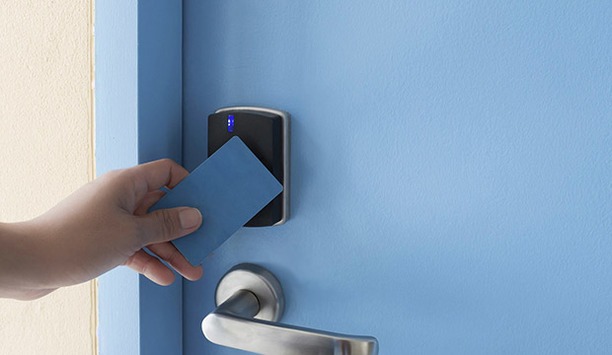
Security Risks of ‘Universal’ Card Readers
Download
High-Security Electromechanical Locking Solutions For Critical Infrastructure
Download

Videos
Electronic door locks: Manufacturers & Suppliers
- Corbin Russwin Electronic door locks
- CyberLock Electronic door locks
- Software House Electronic door locks
- Aiphone Electronic door locks
- Vanderbilt Electronic door locks
- ASSA ABLOY - Aperio® Electronic door locks
- Alpro Electronic door locks
- CIVINTEC Electronic door locks
- CLIQ - ASSA ABLOY Electronic door locks
- Bosch Electronic door locks
- CDVI UK Electronic door locks
- Paxton Access Electronic door locks
- AMAG Electronic door locks
- Codelocks Electronic door locks
- Hikvision Electronic door locks
- HID Electronic door locks
- Honeywell Security Electronic door locks
- Dahua Technology Electronic door locks
- SALTO Electronic door locks
- Adams Rite Electronic door locks
